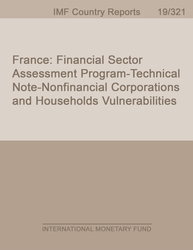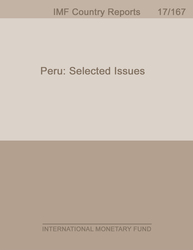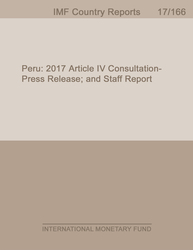
France
Financial Sector Assessment Program-Technical Note-Nonfinancial Corporations and Households Vulnerabilities
Corporates. The debt of French nonfinancial corporations has been on a rising trend in percent of GDP, especially in recent years, in contrast what is observed in peer European countries. This trend on non-consolidated data is mostly accounted for by bond issuances and loans among nonfinancial corporations (NFCs) while bank credit to NFCs has also grown but at a slower pace. While, across countries, French firms do not appear to be more indebted on average or to be more likely to have their debt-at-risk than their peers, there exists a tail of firms with debt-at-risk that has remained fatter than before the global financial crisis, despite the low interest rate environment. Moreover, some banks may have somewhat significant exposures to individual large indebted corporates. Stress tests show that under downside macrofinancial scenarios, corporate debt may increase significantly (up to around 11 percent of GDP in the broad sample of firms) but would remain broadly manageable. However, banks’ large exposures to corporates with debt at risk would increase significantly under the adverse scenario and in aggregate would amount to a significant share of capital. • Households. There is no clear evidence of vulnerabilities in households’ balance sheets at an aggregated level. Households have continued to build their financial net worth by accumulating financial assets even faster than debt. Their saving rate is healthy, and they appear to invest their inflows primarily in safe assets. Household debt is not high in international comparisons. However, some households—lower income, younger—may have experienced a deterioration of their balance sheet along certain dimensions. Such potential pockets of vulnerabilities should be further studied when data are available. The residential real market appears to be broadly aligned with its supply-side and demand-side fundamentals, and there are limited near-term downside risks to housing prices. However, there is a need to remain prudent, because the likelihood of adverse price developments is sensitive to negative shocks to macrofinancial conditions.
Publication date: October 2019
ISBN: 9781513517759
$18.00
Add to Cart by clicking price of the language and format you'd like to purchase
Available Languages and Formats
| English |
Prices in red indicate formats that are not yet available but are forthcoming.
Topics covered in this book
This title contains information about the following subjects.
Click on a subject if you would like to see other titles with the same subjects.
Also of interest
Summary
Copyright © 2010 - 2024
Powered by:
AIDC



